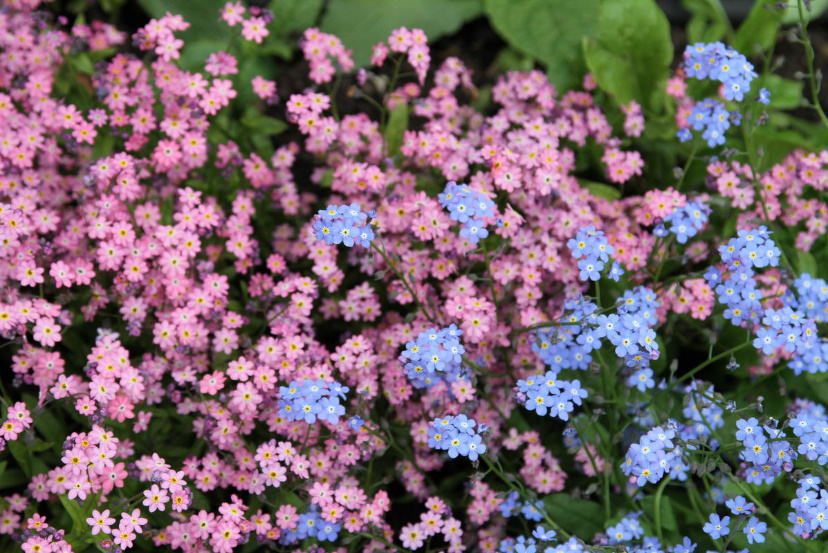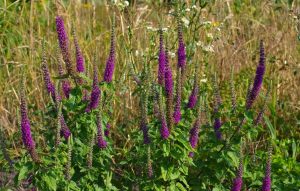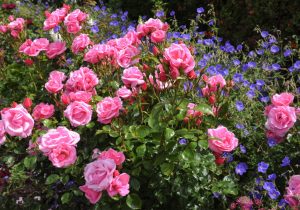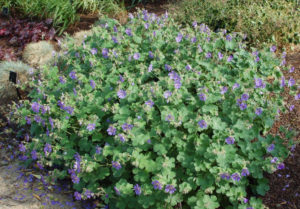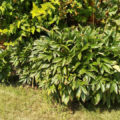This lover of secluded semi—shaded corners of the garden is an invariable messenger of spring. The heavenly shades of her flowers are indeed impossible to forget.
The genus Myosotis is represented by one-, two- and perennial species. Their appearance is quite concise. The bush usually does not exceed 30-40 cm in height . Thin stems — and narrow leaves. Some species have pubescence, hence another name for forget—me-nots – mouse ears. In the inflorescence-curl — a large number of flowers. Opening gradually, they create almost a month and a half of flowering. It is impossible to look away from them, so piercing is this shining blue.
The forget-me-not has several “twins” blooming simultaneously with it, for example Brunner, omphaloides. But it is distinguished by the leaves, the shape and size of the bush and the inflorescence in the form of a “snail”, quite long and very elegant, as well as a bright yellow (rarely white) eye in the center of the flower. Due to the shape of the inflorescence (curl), which is significantly lengthened during flowering, the height of the plant increases during this period.
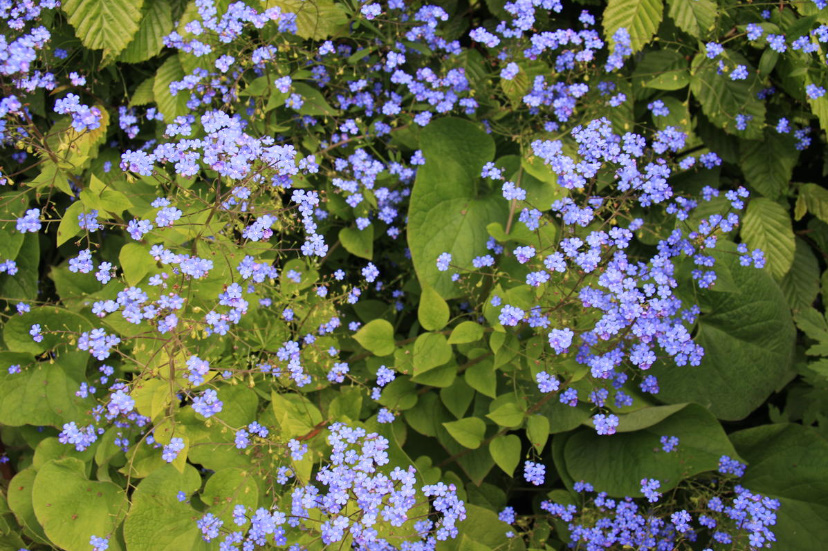
The varieties are not only blue, but also pink and white. Personally, I am so captivated by the heavenly color that it seems as if varieties with a different color were created only to serve as a worthy environment for blue forget-me-nots.

Types and varieties
M. alpestris is a resident of the Alpine belt of the Carpathians, the Caucasus, and the Alps, where rocky soil and a lot of sun prevail. On the basis of this species, many popular varieties have been bred, which bear the common name M. hybrida, the species itself is rare.
The varieties differ in both the height of the bush (quite large, up to 30 cm, ‘Victoria’, ‘Blauer Korb’, compact, up to 15 cm, ‘Indigo’, ‘Compinidi’) and the color of the flowers — almost blue in ‘Blue Ball’, light blue in ‘Miro’, pink in ‘Rosylva’, the rich pink of ‘Carmine King’. The plants are biennial. During seed propagation, the splitting of the trait may occur, and then specimens with a color unusual for the variety are obtained.
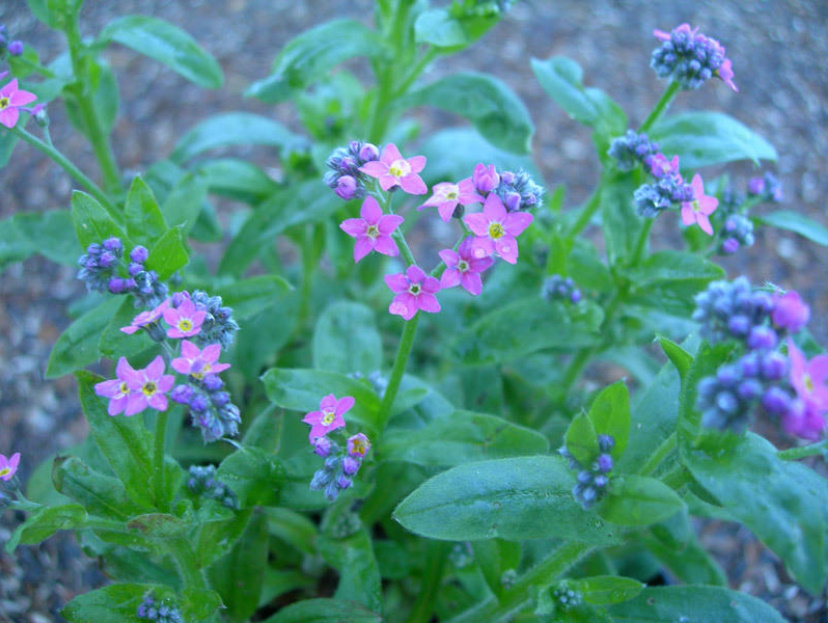
M. palustris is an inhabitant of the banks of rivers, streams, and the outskirts of swamps in southern Siberia and Europe. It is distinguished by a rather large bush (about 40 cm), which forms shoots throughout the growing season, bearing inflorescences-curls, so that flowering lasts from spring to autumn. Both the leaves and flowers of the plant are larger than those of the previous species. The fading shoots die off, and the plant itself is a vegetative juvenile, the decorative period of which reaches a peak for 2-3 years, after which it is better to replace it.
The varieties vary in the shade of the flowers. ‘Thüringen’ has darker flowers, ‘Semperflorens’ they are rich blue. There is also a variegated cultivar ‘Unforgettable’ with creamy white edging of leaves. In my opinion, against the background of variegated leaves, the blueness of the flowers becomes less expressive.
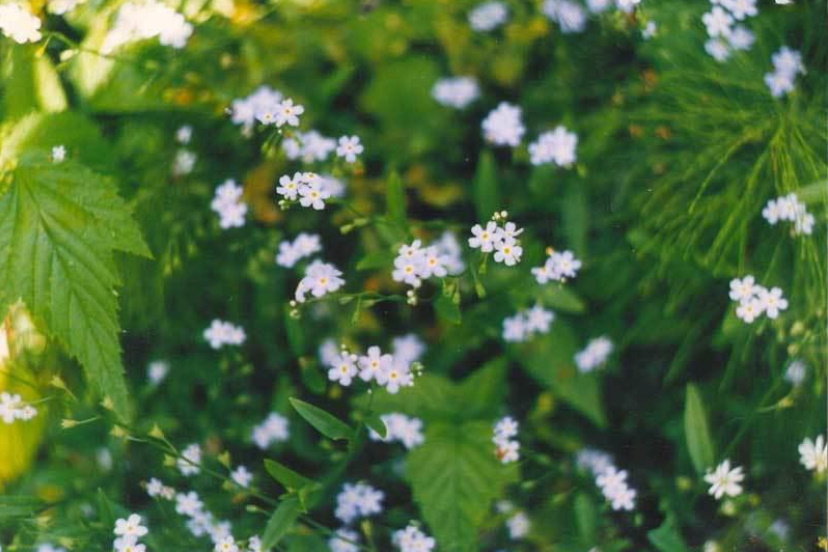
M. sylvatica is a lover of quiet, moist corners under the shade of sparse tree crowns. Bushes up to 30 cm high bear sky-blue flowers. The plant is cultivated as a biennial, there are varieties with pink, blue and blue flowers. ‘Victoria Rose’ is characterized by compact growth (up to 15 cm) and small pink flowers with a yellow eye. If you want to have a piece of the Alps on your site, invite a true European — M. dissitiflora. The plant is grown as a biennial, varieties have blue, pink, white color.
These species can be grown as perennials with a short cycle (three years), but they reach the maximum decorative effect in the second year of development, and in the third year they often have elongated shoots and small flowers, so landscape designers recommend growing forget—me-not as a biennial flower plant.
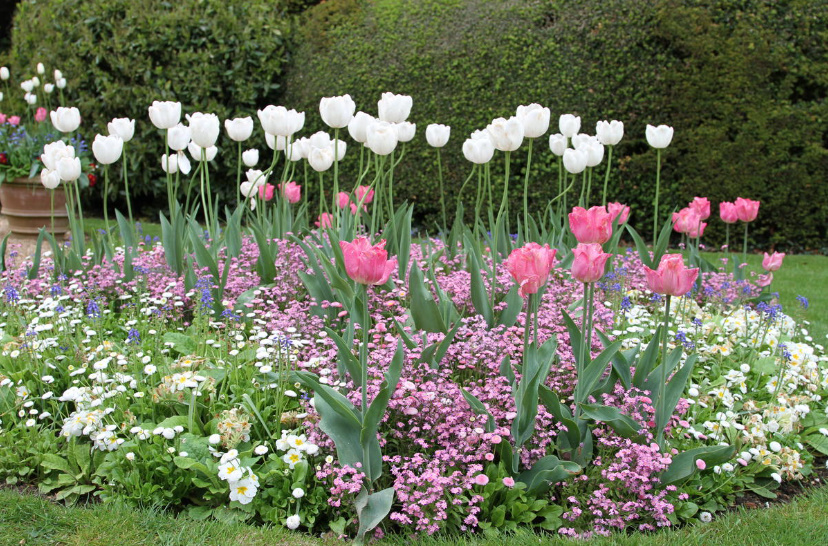
Reproduction and cultivation of forget-me-nots
The main method of reproduction is seed. Nut fruits can begin to ripen on the plant when the last yellow-eyed stars are still holding on to the tip of the curl. Germination persists for 2-3 years. Seeds are sown superficially or slightly sprinkled with soil, they germinate easily and fairly quickly (2-3 weeks after sowing). Picking seedlings is carried out when 1-2 real leaves appear. As a rule, sowing is carried out in June. If you have the opportunity to create wintering conditions with a temperature of +12 … +20 ° C, you can sow a forget-me-not in October-November. Then in the spring you will have bushes ready for flowering.
If desired, you can collect seeds from a bush growing in the garden, but this event has a number of drawbacks:
- signs of the mother plant may not be transmitted to offspring,
- self-seeding may occur,
- the withering bush has an unsightly appearance.
Varieties can be propagated by cuttings in May-June, for which growing shoots 4-5 cm long are used, which are rooted in a mixture of sand and perlite.
Forget—me-nots quite easily tolerate transplanting even in a blooming state – very often gardeners cannot pass by, bring a flowering bush from the edge of the forest or the shore of the lake and successfully plant it in their garden.
Compact root system allows you to grow forget-me-nots in a limited amount of soil: in containers, balcony boxes (subject to high-quality and timely watering), flowerpots. They lose their decorative effect immediately after flowering, but the faded bushes can be removed — and then annuals can be planted in their place.
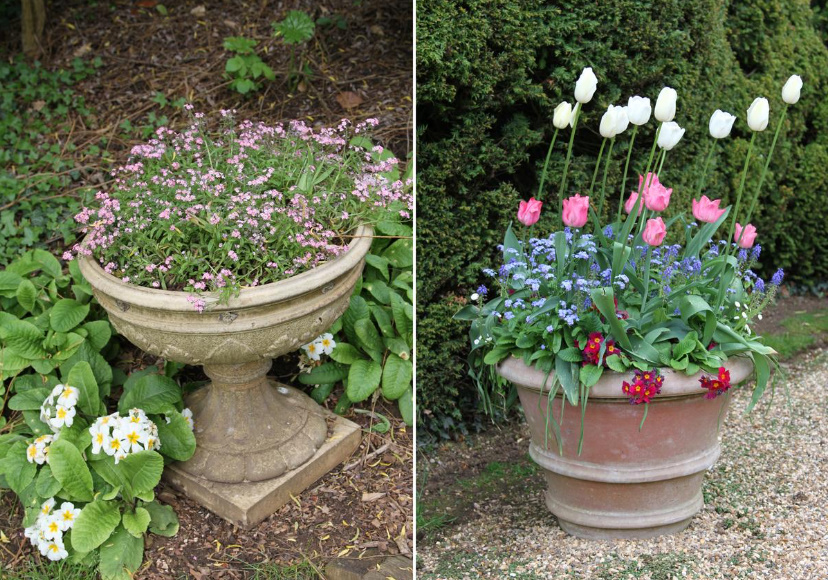
Forget—me-nots are unassuming – and not demanding of the habitat. They prefer moderately fertile soils with an average level of humidity or moist. On overly fertilized — they increase abundant foliage, the rhythm of their development is disrupted. On poor soils, forget-me-nots can be fed once per season with organic and complex mineral fertilizers. Plants growing in the container need more frequent feeding (once every 2-3 weeks).
For forget-me-nots, it is better to take a place with a sliding penumbra or under the openwork crowns of birch, irga, small-leaved maples. If the spring is warmer than usual (or even hot), then the duration of flowering in a sunny place can be reduced to two weeks. And in the penumbra, this will not happen, besides, the blue color will be even brighter and more spectacular.
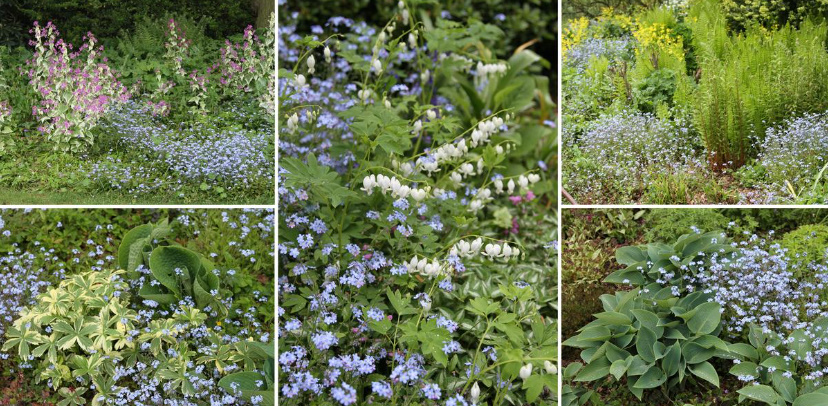
Forget-me-not is resistant to pests and diseases, but growing in unfavorable conditions (dry soil and air, hot sun) can be attacked by mealyworm and aphids. In conditions of excessive moisture, it can suffer from slugs and powdery mildew. Species plants overwinter perfectly, winter hardiness of some varieties may be slightly reduced (according to USDA — zones 4-5).
Forget-me-nots in bloom create an airy marshmallow cloud, quite bright and saturated. They, like haze plants, are delightful as an environment for plants with large flowers (for example, for daffodils). The blue color is like a breath of coolness combined with the hot colors of tulips. Tulips love the sun, you say. And you will be right. But while the crowns of the trees are still draughty, they have time to bloom — and forget-me-nots continue their development in the sliding penumbra.

The forget-me-not soloes in a duet with evergreen herbaceous plants, enlivens the gloomy planting of conifers, creates harmonious combinations with equally elegant Dicentra, Corydalis, Viola × wittrockiana, is indispensable for romantic compositions of pastel tones.
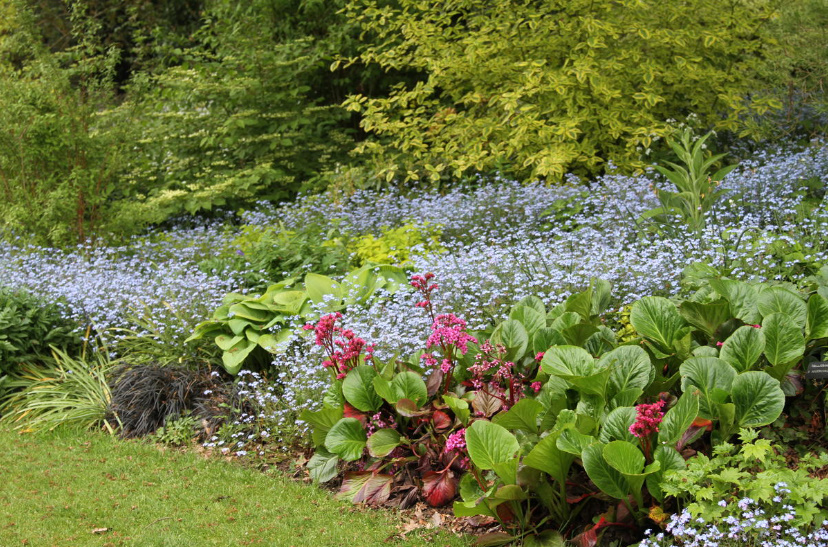
A compact openwork forget-me-not bush with an unpretentious tendency to easy lodging in the absence of support is the best way to decorate the edge of a flower garden and even to create a blooming border.

Two—tone forget-me-not flowers allow you to discover more and more new combinations – with yellow aquilegia, Ranunculus acris ‘Gold Rose’, with Iris pseudacorus, with yellow-leaved forms of shrubs and herbaceous plants that turn pale green in partial shade.
Due to early regrowth and a lush openwork bush, forget—me-not perfectly complements late-awakening plants – hosta, astilba, autumn anemones, Lysimachia punctata, warm-season cereals. The rustic appearance of the forget-me-not allows it to be used in natural flower beds together with spring anemones, Epimedium, Trollius, Lychnis flos-cuculi.

Distillation
Forget-me-nots can be made to bloom at the wrong time: in March-April or even on New Year’s holidays. For distillation, plants need to go through a period of cold rest, which is possible on a non-freezing balcony, in the basement (subject to illumination), in a special growbox (a “smart” box for growing plants) with temperature control or a greenhouse. Here’s what you need to do:
- in June — sow seeds;
- in August — to pick seedlings in boxes or pots;
- in September (before the onset of persistent frosts) — transfer the plants to a non-freezing room, where they must pass the cold period preceding flowering at a temperature of +1 … +4 ° C;
- after the expiration of the forced “cold rest” a month before the expected flowering, the plants are transferred to a warmer room. The optimum temperature is +12…+15 °C. It is allowed to increase it to +20 … +24 ° C, but then you will have to maintain high humidity. The air temperature is too high (more than +24°C) negatively affects flowering, it can be weak, short, featureless.
Since the forget-me-not is shade-tolerant, it does not need additional illumination on the windowsill, even in the dark (winter) period of the year.
